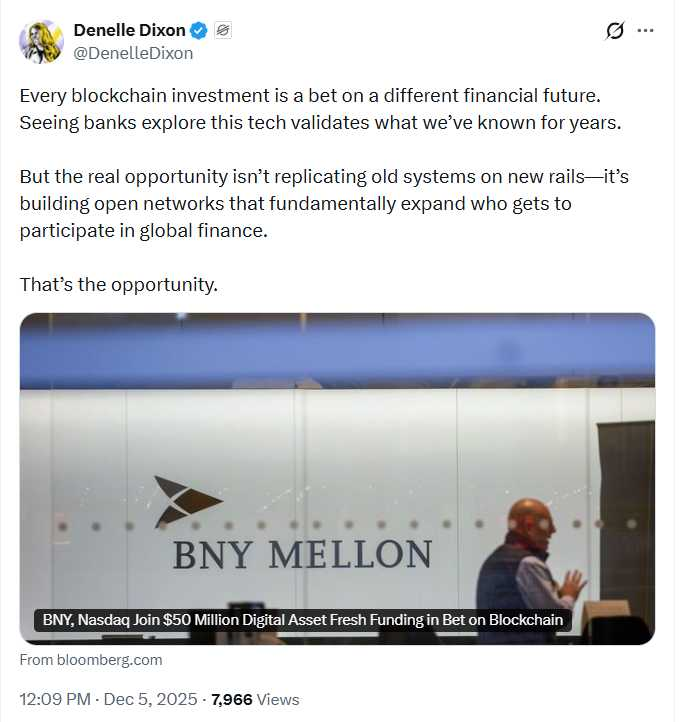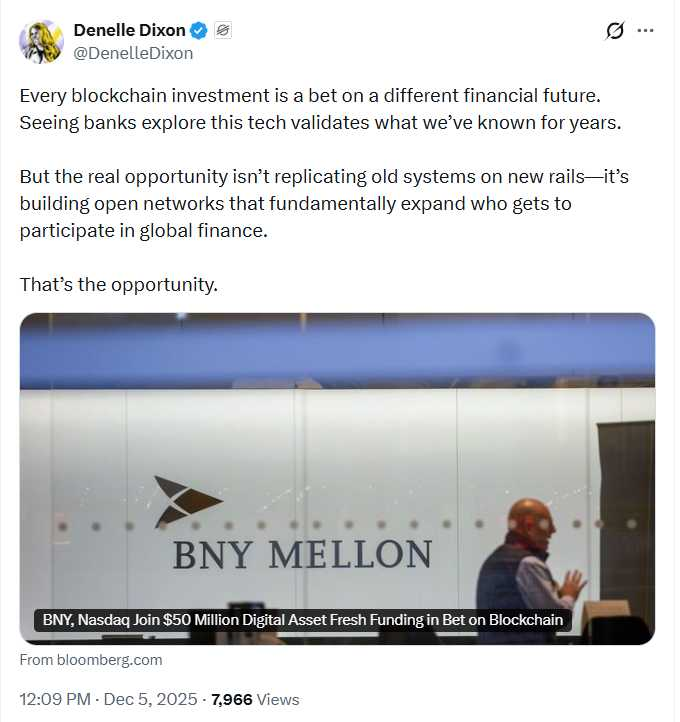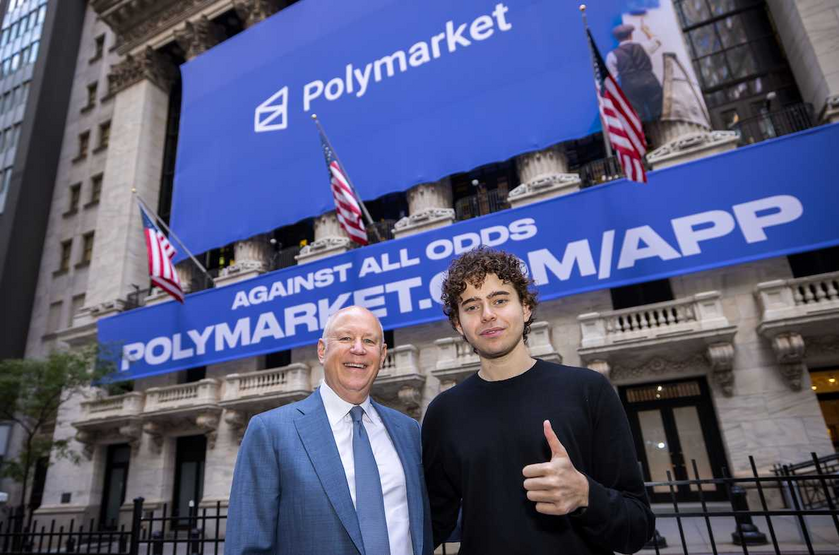- Fetch-ai Network is developing the infrastructure and tooling for creating Web2 and Web3 AI applications.
- FET is the native token of Fetch-ai Network. The current main use cases for FET include:
- Staking: FET is an access deposit token that acts as a form of stake to demonstrate the desire to behave appropriately.
- Value exchange between agents: FET is required for two agents to perform an exchange of value in the ecosystem.
- AI/ML access: FET token enables development of and access to a broad range of machine learning and artificial intelligence tasks that are available on the ledger.
- The project consists of the following major components working in conjunction:
- Fetch-ai blockchain system: a 💥Cosmos SDK💥 based self-sovereign blockchain ledger and the supporting tools for developing DApps on the network.
- Applications built on Fetch-ai: the modular Autonomous Economic Agents (AEAs) and the Digital Twin Platforms that can efficiently and securely communicate peer-to-peer and provide interconnectivity with multiple networks.
Historical daily prices (in USD)

Token Summary

1. Overview
1.1 What is Fetch-ai Network
Fetch-ai Network is a Cambridge-based artificial intelligence lab building an open-access decentralized blockchain based framework with the principal goal of delivering a fully autonomous, agent-based digital economy. The Fetch-ai Network technology stack is built using principles derived from a branch of artificial intelligence known as multi-agent systems. This approach involves solving different problems from the bottom-up by creating individual autonomous software agents that perform actions in the world to accomplish their individual objectives. By combining the actions of multiple agents, it is possible to achieve outcomes that would not be possible with centralized architectures because the environments are too complex, are spatially distributed or involve multiple stakeholders. Blockchain technology involves the design of incentives to successfully coordinate the actions of multiple disinterested parties to achieve a common goal, and can already be seen as the world’s most successful implementation of multi-agent systems. Fetch-ai Network is working to generalize and extend the results from this established research field into new domains in finance, supply chain, mobility, smart cities and IoT applications.
1.2 Token Use Cases
The primary use cases of the FET token are listed below.
- Ability to connect agents and nodes to the network: This is an access deposit token that acts as a form of stake to demonstrate the desire to behave appropriately. It modulates the ability for bad actors to flood the network with undesirable nodes or agents due to the escalating cost of doing so.
- Value exchange between agents: The FET token is required in order to allow for two agents, regardless of where they are, to perform an exchange of value. The FET token is infinitely divisible, thereby supporting transactions that have very low monetary value, but in aggregate provide new and profound levels of insight.
- Access to the digital world: FET tokens are needed to access, view, and interact with the decentralized digital world. This is a space optimized for digital entities: an abstract representation of the real world in many dimensions that allows machines to make sense of and work within. The FET token is needed to gain access to all aspects of this digital world for agents.
- Ability to access and develop ledger-based AI/ML algorithms: The FET token enables development of and access to a broad range of machine learning and artificial intelligence tasks that are available on the ledger. These may be primitive services developed by Fetch-ai Network such as: trust and prediction models, or they may be large-scale independently developed services for network users.
- For exchange into Fetch-ai Network’s operational fuel: operation costs in Fetch-ai Network are decoupled from the Fetch-ai Network token in a similar way to that of “gas” on the Ethereum network but with additional functionalities designed to increase the stability of such a fuel and look at addressing the issues associated with high and low-velocity economies. Fetch-ai Network’s operational fuel allows access to processor time for contract execution and services for agents.
1.3 Products, technical details, consensus mechanism
The Fetch-ai Network blockchain is an interchain protocol based on the Cosmos-SDK, and uses a high-performance WASM-based smart contract language called Cosmwasm to allow advanced cryptography and machine learning logic to be implemented on-chain. This layer is responsible for securing the network through consensus. It also provides staking, governance, and identity services that support digital twin applications. The Fetch-ai Network blockchain relies on a modified version of the Cosmos protocol’s Tendermint Proof-of-Stake (PoS) consensus mechanism to secure the network. And since the Fetch-ai Network blockchain is Cosmos-based, it can be interoperable with other blockchains in the Cosmos ecosystem via the inter-blockchain communication (IBC) protocol. In addition the Feth.ai technology stack further consists of: an agent framework, an open economic framework and an agent communication network.
The Autonomous agent framework is designed to allow for a decentralized digital economy to manifest where each individual and organization is represented by an autonomous economic entity with its own agency. Designed as an actor-like asynchronous message passing system, the framework allows for a high degree of modularity as components largely communicate via messages. Moreover, the framework can be bifurcated in two parts: the core, developed by Fetch-ai Network and external contributors and packages implementing agent-specific business logic. Figure one presents a simplified illustration of the AEA framework.
The Open Economic Framework (OEF) consists of protocols, languages and market mechanisms agents use to search and find each other, communicate with as well as trade with each other. As such the OEF defines the decentralized virtual environment that supplies and supports APIs for autonomous third-party software agents, also known as Autonomous Economic Agents (AEAs).
The agent communication network is a peer-to-peer communication network for agents. It allows AEAs to send and receive envelopes between each other. The implementation builds on the open-source libp2p library. A distributed hash table is used by all participating peers to maintain a mapping between agents' cryptographic addresses and their network addresses. Agents can receive messages from other agents if they are both connected to the ACN (see here for an example).
2. What is Fetch-ai Network?
2.1 Project overview
Fetch-ai Network is a Cambridge-based artificial intelligence lab building an open-access decentralized blockchain based framework with the principal goal of delivering a fully autonomous, agent-based digital economy. The Fetch-ai Network technology stack is built using principles derived from a branch of artificial intelligence known as multi-agent systems.
2.2 Project mission
Fetch-ai Network is working to generalize and extend the results from established research fields such as blockchain, artificial intelligence and multi agent systems into new domains in finance, supply chain, mobility, smart cities and IoT applications, by creating useful antifragile tools, decentralized apps, protocols and frameworks.
2.3 Project value proposition
By bringing data to life Fetch-ai Network solves one of the greatest problems in the data industry today: data can’t sell itself. With Fetch-ai Network, it can. Data is able to actively take advantage of any opportunity to exploit itself in any marketplace, in an environment that’s constantly reorganizing to make that task as easy as possible. Internet-of-things (IOT) devices inhabited by Fetch-ai Network autonomous agents can increase utilization by capitalizing on short-lived opportunities to sell information that they possess in existing, as well as novel, information services markets: an agent in a vehicle can provide weather and road conditions by simply relaying the activity of its windscreen wiper and washer. Through the deployment of agents in combination with machine learning technology, data and hardware can now get up on their own two feet, get out there and sell themselves entirely free of intermediaries or human intervention.
3.Token sales and economics
3.1 Token sales data
Fetch-ai Network leverages its own native cryptocurrency FET as a utility token and the primary medium of exchange on the platform. FET is used to pay for network transaction fees, deploy AI, and pay for services. Users can also choose to stake FET to participate in securing the network via its Proof-of-Stake consensus mechanism and earn rewards in return for contributing to validator nodes.
There is a fixed number of divisible tokens that are used on the Fetch-ai Network network as the digital currency for all transactions, as well as for network operations such as secure communications. Tokens can also constitute an access deposit for both nodes and agents wishing to perform certain operations (as a security mechanism to discourage malicious behavior). Token allocation has been divided amongst public sale, seed investors & private sale, founders & team, advisors, ecosystem, mining rewards, and issuer.

3.2 Token Distribution
The total number of tokens generated is intended to be 1,152,997,5753. No further tokens will be created, but native Fetch-ai Network tokens can be subdivided indefinitely



4. Token Overview & Use Cases
Fetch.ai leverages its own native cryptocurrency FET as a utility token and the primary medium of exchange on the platform. FET is used to pay for network transaction fees, deploy AI, and pay for services. Users can also choose to stake FET to participate in securing the network via its Proof-of-Stake consensus mechanism and earn rewards in return for contributing to validator nodes.
There is a maximum supply of approximately one billion FET, which exists both in its native form as an ERC-20 token that can be used throughout the Ethereum ecosystem, and as a BEP-20 Token that can be used throughout the Binance Smart Chain Network. FET can be easily exchanged through a token bridge at a 1:1 ratio for either the Fetch.ai blockchain mainnet or ERC-20 version as needed. Staking on the Fetch.ai mainnet can earn users high rewards with significantly lower transaction fees for users.
There are a range of use-cases which Fetch-ai Network’s multi-agent systems can tap into and create a decentralized digital economy. From service sectors like Travel or Gig-economy to sectors relying on automation and machine learning like Mobility or Supply chain management, Multi-Agent systems can decentralize access to data and disrupt existing data monopolies.
Starfleit: Starfleit is a decentralized exchange (DEX) where transactions occur directly between crypto traders without needing a centralized market maker but instead using an Automated Market Maker (AMM) developed using Cosmwasm smart contracts. The assets available to swap range from native Fetch-ai Network assets, CW-20 assets, IBC transferable assets, and even assets from other chains outside the Cosmos ecosystem, via the Axelar bridge.
Atomix: Atomix enables stablecoin holders to supply liquidity and receive a yearly yield composed of protocol-generated returns and ATMX rewards. That yield is highly competitive compared to returns delivered by decentralized finance (DeFi) and traditional alternatives.
MOBIX: MOBIX (MOBX), is a Move 2 Earn, decentralized micro-mobility marketplace that incentivizes sustainable urban mobility.
Mettalex: A decentralized crypto and commodities derivatives trading platform, Mettalex is addressing pain points in commodities markets like front running, poor liquidity, price manipulation and loss of value in the form of margin calls.
Resonate.social: Resonate (RESO), decentralized social network for Web3 that enables users for the very first time to have a personal AI-powered, trusted social experience that is automatically sanitized from malicious, untrustworthy sources and actors. Built on the Fetch-ai Network blockchain, Resonate.social empowers users to deploy personalized AI proxies to accomplish any Web3 social economic activity on their behalf within and without the network.
Collective Learning:
The Fetch-ai collective learning module is a tool that enables distributed parties to work together to train machine learning models without sharing underlying data with any of the individual participants. Utilizing blockchain technology and AI learning capabilities, it supports and trains its network to learn from private data without having access to it.
- AXIM: Axim allows businesses to safely and securely connect data silos, improve their understanding via machine learning models and gain valuable insights to help optimize their business functions, without compromising any of their data privacy.
- DabbaFlow: DabbaFlow, empowers individuals and companies to take more control over their data and turn them into real business outcomes, while keeping their data private and secure. It is the first of its kind end-to-end encrypted file-sharing platform and is the first step on Fetch-ai Network’s mission to bring AI fully to Web3.
- OpenColearn: Open CoLearn is a platform to give distributed app developers (Web 3.0) the tools to use AI securely while safeguarding consumers' data privacy and ownership. It bridges the gap between consumers who generate a low volume of data and care about privacy and data ownership and developers who want to provide AI predictions or monetize that data in a distributed way.
Notable use-cases for Collective Learning
- COVID-19 detection : Multiple participants from the healthcare sector trained a machine learning algorithm using Fetch-ai’s Collective Learning to detect COVID-19 in chest x-rays. During these trials, the trained AI model correctly identified COVID-19 cases from a training set of over 1,434 chest X-ray images with 90% accuracy.
- Cancer cell detection: In partnership with Poznan Supercomputing Networking Center (PSNC) on Collective Learning, Fetch-ai and PSNC will train algorithms for hospitals and research centers worldwide to identify and detect circulating cancer cells in patients’ blood or tissue biopsies in the future.
- Bosch and Fetch-ai - Predictive Maintenance: Predictive maintenance is a process that identifies potential failures of machinery before they happen.To identify potential failures of manufacturing machinery, Bosch is utilizing Fetch-ai’s Collective Learning to predict potential failures in Bosch’s machinery while maintaining data privacy.
- Colearn pAInt: This is an art creation platform that allows groups of creators to automatically generate NFTs using Machine Learning. Each piece is one of a kind and sold via auction on OpenSea. \
4.1 DeFi
- Botswap.fi: This is an automated DeFi Liquidity Management App where users can manage and protect their crypto assets across multiple different chains such as Ethereum (ETH) and Binance Smart Chain (BSC) on Uniswap and PancakeSwap and automate the process of swapping coins, managing liquidity pools, and more by using the Fetch-ai Network AEAs. Just create an agent, a trigger, choose the pairs in your portfolio you want to protect against rug pulls and that’s all, your agent does the work for you through day and night.
4.2 Mobility
- Deep Parking: The smart parking application of the future. This prototype was demonstrated at the world’s largest automotive conference in Munich, Germany. Tested on a Tesla, Jaguar, and BMW, along with partners - Bosch, Ocean Protocol and Datarella, Deep Parking is an application built upon AI and blockchain technology that finds parking spaces for automobile drivers that were previously unused. Rather than driving into a parking lot hoping to find a space, a Fetch-ai Network digital twin representing your car will search and autonomously communicate with all the local parking spot digital twins to find the nearest available space to your destination and book it for you, before directing you to it. The digital twins negotiate and agree the terms for the parking booking. Once the user has left the parking space, the payment transactions are sent automatically.
- DDN (Decentralized Delivery Network): Forget Uber, Lyft, Deliveroo and any other centralized service providers you know of. That’s what DDN or decentralized delivery network is about - where you can interact with a service provider, negotiate your price and travel/have items delivered and have this done autonomously on your behalf. The advantages are plenty - you return value to local economies, you have unparalleled level of privacy and everything is decentralized - which means you keep control of your data
4.3 Travel
- The FET powered Travel marketplace delivers an alternative method by which bookings can be taken: one where the customer and hotels deal with each other directly and as a result offer significant cost savings for both hotels and consumers. It aims to provide an unparalleled level of privacy for all its users by moving the private data away from centralized entities by keeping it safe in each user’s smartphone and a personalized booking experience.
4.4 Supply Chain
- The partnership between Fetch-ai Network and LiquidChefs aims to utilize Fetch-ai Network’s Autonomous Economic Agents integrated with its Search and Discovery Framework to build local and transparent supply chains, allowing LiquidChefs to search and connect with any sustainable supplier in its immediate vicinity. By digitizing and automating the LiquidChefs supply chain, Fetch-ai Network infrastructure will create a decentralized supply chain marketplace. This marketplace connects buyers and suppliers agents, in real time, to support dynamic, scalable, multi-agent supply chains.
- This will allow individuals, organizations and assets to be represented as autonomous agents which work autonomously based on the users’ needs and preferences, such as finding local and sustainable suppliers. The decentralized supply chain marketplace was showcased at the Davos World Economic Forum in 2022.
5. Roadmap & Updates
5.1 Completed Milestones
| Completion Date | Milestone | Commentary |
|---|---|---|
| 2020: Q3 | Launch of Atomix | Medium Announcement |
| 2021: Q1 | First stable release of the Agent (AEA) framework v1.0 released | Link |
| 2021: Q1 | Fetch-ai Network Mainnet v2.0 launched | Link |
| 2021: Q2 | FET listed on Coinbase | Link |
| 2021: Q2 | DeFi Agents (recently renamed to BotSwap) released | Link |
| 2021: Q2 | Multi-modal transport demo at IAA | Medium Announcement |
| 2021: Q4 | App demo for ethical and sustainable supply chains showcased at WEF Davos 2022 | Medium Announcement |
| 2021: Q4 | FET listed on Bitstamp | Link |
| 2021: Q4 | FET listed on Gemini | Tweet |
| 2022: Q1 | $150M Development fund launched | Link |
| 2022: Q1 | Resonate.social launched | Link |
| 2022: Q1 | FET listed on etoro | Link |
| 2022: Q1 | FET listed on Voyager | Link |
| 2022: Q1 | Fetch-ai Network joins IBC and FET/OSMO listed on Osmosis DEX | Link |
| 2022: Q2 | FET listed on Kraken, Bitpanda, | Link |
| 2022: Q2 | DabbaFlow (CoLearn) launched | Link |
| 2022: Q3 | Native FET token listed on Binance US | Tweet |
| 2022: Q3 | 40000 new users onboarded to Fetch-ai Network | Link |
5.2 Current Roadmap
2022 Q3-Q4
- Fetch-ai Network
- Maintenance upgrade of the Fetch-ai Network for any security patches from the upstream Cosmos SDK releases
- Eridanus release which will bring support for Group Module, BLS signatures, and cross chain composability using interchain accounts. This will also include patches from the upstream Cosmos SDK releases
- External Protocol Integrations
- Integrate with the Axelar bridge to support bi-directional transfer of Axelar supported EVM assets (including popular stablecoins) between the EVM ecosystem and the Fetch Ecosystem
- Integrate with the SubQuery Indexer protocol to bring fast querying capabilities to the other Fetch-ai Network products such as the Fetch Wallet, and the Fetch Explorer. Additionally, make it available for the Fetch-ai Network Ecosystem projects by providing a Fetch-ai Network hosted indexing service.
- Products and Tools
- Fetch Wallet features
- Integrating wallet to wallet messaging and notification service, including group messaging and group notification support
- Swap support with integration of the Fetch-ai Network Ecosystem DEX - Starfleit
- Other Features (non-exhaustive list)
- Fetch Station Explorer Features
- Improved UI/UX for general areas such as accounts and governance proposal
- Ability to query and interact with contracts
- NFT support
- AEA - Autonomous Economic Agent framework and ACN - Agent Communication Network
- Increasing community engagement to gather feedback for future feature development
- Release improved documentation and education content on AEAs
- Initial set of Agent component examples and crowdsourced examples for the AEA registry
- Jenesis shell tool
- Initial beta release of Jenesis shell tool to provide scaffolding for bootstrapping DApp development on the Fetch-ai Network
- Fetch Wallet features
- Ecosystem and Community (non-exhaustive list)
- Launch Fetch Improvement Proposal (FIP) process
- Launch of Fetch’s Digital Twin platform applications
- Launch of Atomix Real-World Asset (RWA) lending protocol on the Testnet
- Launch of RWA backed stable coin on the Testnet
- Launch of Fetch-ai Network ecosystem DEX - Starfleit
- Launch of GetMySlice GDPR compliant data sharing service
2023 Q1-Q2
- Fetch-ai Network
- Formax release supporting Cosmos SDK Lambda upgrade (v9)
- Gemini release supporting Cosmos SDK Epilson upgrade (v10)
- External Protocol Integrations
- Add support for generic message passing from the Axelar bridge to support cross chain and cross ecosystem composability
- Support upstream changes for the Axelar Bridge integration
- Support upstream changes for the SubQuery Indexer integration
- Products and Tools
- Fetch Wallet features
- Native mobile wallet
- Bi-directional Open Banking integration
- Support for EVM chains
- Swap support for EVM assets using the Axelar Bridge
- Off-chain decentralized peer-to-peer communication support
- Wallet based analytics
- Fetch Station Explorer Features
- Launch of the Fetch Name Service
- AEA - Autonomous Economic Agent framework and ACN - Agent Communication Network
- Improved AEA registry
- Improved Agent graphical UI
- Jenesis shell tool
- Add contract IDE and testing capabilities
- Fetch Wallet features
- Ecosystem and Community (non-exhaustive list)
- Launch of Atomix Real-World Asset (RWA) lending protocol on the Mainnet
- Launch of RWA backed stable coin on the Mainnet
5.3 Commercial and Business Development Progress
- Bosch
- Bosch is working with Fetch-ai Network as part of the launch of a fully functional blockchain network (v2.0 main-net), testing key features on the test-net. Sharing a common vision, the strategic advance engineering project “Economy of Things” (EoT) at Bosch Research and Fetch-ai Network aim to transform existing digital ecosystems using distributed ledger technologies (DLT) like blockchain.
- Catena X
- Catena-X is the first integrated, collaborative, open data ecosystem for the automotive industry of the future.
- Together with other partners, Fetch-ai Network is supporting the Catena-X group in building a digital ecosystem that provides equal collaboration of all the stakeholders by setting up new standards in the automotive value chain along with building greater manufacturing and supply chain efficiency.
- moveID
- moveID is part of the Gaia-X 4 Future Mobility project family consisting of five consortia and aims to develop a decentralized digital identity infrastructure for mobility in Europe
- Together with partners within moveID, Over the next three years, the GAIA-X 4 moveID project is set to develop the necessary standards and technological concepts to enable the secure exchange of information between providers of mobility applications and their customers. The goal is to create decentralized digital vehicle identities. This is an important prerequisite for the mass use of electric vehicles, automated driving, and the establishment of connected cities. GAIA-X 4 moveID is supported to the tune of 14 million euros by the German Federal Ministry for Economic Affairs and Climate Action – covering half of the project costs.
- IOTA
- IOTA is an open-source distributed ledger and cryptocurrency designed for the Internet of things.
- Fetch-ai Network and IOTA’s collaboration enables granular control over data and to reduce the reliance on centralized systems that take advantage of data.
- LiquidChefs
- LiquidChefs specialise in the supply of portable bar hire, events bars and mobile cocktails bars, as well as, slick and stylish bartenders and baristas for any private or corporate event
- This partnership paves the way for increased transparency within supply chains using autonomous economic agents and was showcased at WEF Davos 2022
- IAA Mobility 2021
- The IAA (Passenger Cars) event & brand is known as Germany's leading international automotive trade fair.
- Fetch-ai Network along with its partners — Bosch, Datarella, and Ocean Protocol showcased our exciting collaboration demonstrating the technology involved in Deep Parking. Deep Parking is an application built upon AI and blockchain technology that finds parking spaces for automobile drivers that were previously unused.
6. Team Overview
7. Community
Telegram (English)
Telegram (Chinese)
Reddit



























